RhoA regulates translation of the Nogo-A decoy SPARC in white matter-invading glioblastomas
- PMID: 31062076
- PMCID: PMC6660512
- DOI: 10.1007/s00401-019-02021-z
RhoA regulates translation of the Nogo-A decoy SPARC in white matter-invading glioblastomas
Abstract
Glioblastomas strongly invade the brain by infiltrating into the white matter along myelinated nerve fiber tracts even though the myelin protein Nogo-A prevents cell migration by activating inhibitory RhoA signaling. The mechanisms behind this long-known phenomenon remained elusive so far, precluding a targeted therapeutic intervention. This study demonstrates that the prevalent activation of AKT in gliomas increases the ER protein-folding capacity and enables tumor cells to utilize a side effect of RhoA activation: the perturbation of the IRE1α-mediated decay of SPARC mRNA. Once translation is initiated, glioblastoma cells rapidly secrete SPARC to block Nogo-A from inhibiting migration via RhoA. By advanced ultramicroscopy for studying single-cell invasion in whole, undissected mouse brains, we show that gliomas require SPARC for invading into white matter structures. SPARC depletion reduces tumor dissemination that significantly prolongs survival and improves response to cytostatic therapy. Our finding of a novel RhoA-IRE1 axis provides a druggable target for interfering with SPARC production and underscores its therapeutic value.
Keywords: AKT; ENTPD5; Glioblastoma; IRE1α; Invasion; Nogo-A; Post-transcriptional regulation; RhoA; SPARC; White matter.
Conflict of interest statement
GR has received research Grants from Roche and Merck Serono.
Figures
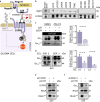

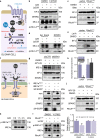
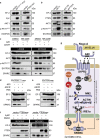
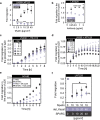
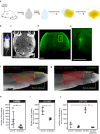
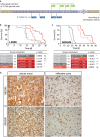
Similar articles
-
Autocrine control of glioma cells adhesion and migration through IRE1α-mediated cleavage of SPARC mRNA.J Cell Sci. 2012 Sep 15;125(Pt 18):4278-87. doi: 10.1242/jcs.099291. Epub 2012 Jun 20. J Cell Sci. 2012. PMID: 22718352
-
SPARC-induced migration of glioblastoma cell lines via uPA-uPAR signaling and activation of small GTPase RhoA.Int J Oncol. 2006 Dec;29(6):1349-57. Int J Oncol. 2006. PMID: 17088972 Free PMC article.
-
Gastrin induces over-expression of genes involved in human U373 glioblastoma cell migration.Oncogene. 2001 Oct 25;20(48):7021-8. doi: 10.1038/sj.onc.1204882. Oncogene. 2001. PMID: 11704826
-
Aberrant miRNAs Regulate the Biological Hallmarks of Glioblastoma.Neuromolecular Med. 2018 Dec;20(4):452-474. doi: 10.1007/s12017-018-8507-9. Epub 2018 Sep 4. Neuromolecular Med. 2018. PMID: 30182330 Review.
-
Models for evaluating glioblastoma invasion along white matter tracts.Trends Biotechnol. 2024 Mar;42(3):293-309. doi: 10.1016/j.tibtech.2023.09.005. Epub 2023 Oct 6. Trends Biotechnol. 2024. PMID: 37806896 Review.
Cited by
-
Sphingosine-1-Phosphate Recruits Macrophages and Microglia and Induces a Pro-Tumorigenic Phenotype That Favors Glioma Progression.Cancers (Basel). 2023 Jan 12;15(2):479. doi: 10.3390/cancers15020479. Cancers (Basel). 2023. PMID: 36672428 Free PMC article.
-
Nogo-A/NgR signaling regulates stemness in cancer stem-like cells derived from U87MG glioblastoma cells.Oncol Lett. 2022 May 27;24(1):230. doi: 10.3892/ol.2022.13351. eCollection 2022 Jul. Oncol Lett. 2022. PMID: 35720478 Free PMC article.
-
Impact of glioma metabolism-related gene ALPK1 on tumor immune heterogeneity and the regulation of the TGF-β pathway.Front Immunol. 2025 Jan 7;15:1512491. doi: 10.3389/fimmu.2024.1512491. eCollection 2024. Front Immunol. 2025. PMID: 39845963 Free PMC article.
-
ENTPD5: identification of splicing variants and their impact on cancer survival.Purinergic Signal. 2021 Sep;17(3):467-480. doi: 10.1007/s11302-021-09795-6. Epub 2021 Jun 2. Purinergic Signal. 2021. PMID: 34075526 Free PMC article.
References
Publication types
MeSH terms
Substances
Grants and funding
- Junior Group Leader Award/CHS Stiftung/International
- 01ZX1401A/Bundesministerium für Bildung und Forschung/International
- 01ZX1401C/Bundesministerium für Bildung und Forschung/International
- 01ZX1401B/Bundesministerium für Bildung und Forschung/International
- 01ZX1401/Bundesministerium für Bildung und Forschung/International
LinkOut - more resources
Full Text Sources
Medical
Miscellaneous

